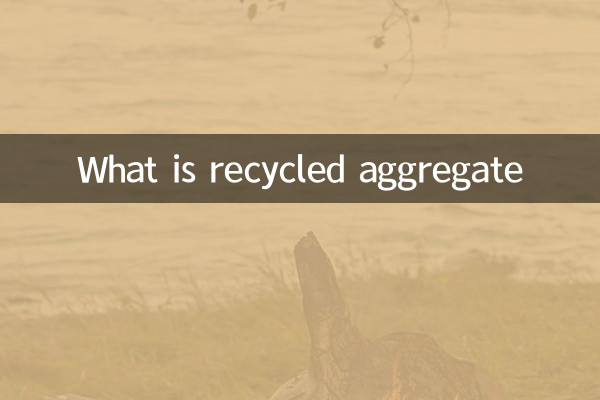What is recycled aggregate
With the increasing global awareness of environmental protection and the urgent need for resource recycling, recycled aggregates, as a sustainable building material, have attracted much attention in recent years. This article will introduce in detail the definition, classification, production process, application scenarios and market data of recycled aggregates to help readers fully understand this green material.
1. Definition of recycled aggregates

Recycled aggregate refers to artificial aggregate that can be used in new construction projects after crushing, screening, cleaning, etc. construction waste (such as concrete, bricks, asphalt, etc.). Its physical properties are close to natural aggregate, but it has more environmental protection and economic value.
2. Classification of recycled aggregates
| Classification criteria | type | Features |
|---|---|---|
| Source of raw materials | concrete recycled aggregate | Derived from waste concrete, higher strength |
| Bricks and Tiles Recycled Aggregate | It comes from discarded bricks and tiles, and has a high water absorption rate. | |
| Mixed recycled aggregate | Mixed treatment of various construction wastes | |
| Particle size | Coarse recycled aggregate (>5mm) | for structural concrete |
| Fine recycled aggregate (<5mm) | for mortar or filling material |
3. Production process of recycled aggregates
The production of recycled aggregate mainly includes the following steps:
| step | Operation content | Technical points |
|---|---|---|
| 1. Preprocessing | Removing impurities (metal, wood, etc.) from construction waste | Manual sorting + magnetic separation equipment |
| 2. broken | Use a jaw crusher or impact crusher | Control particle size distribution |
| 3. Screening | Classification by particle size | Multi-layer vibrating screen |
| 4. Intensify treatment | Physical or chemical methods to improve performance | Optional steps |
4. Application scenarios of recycled aggregates
Recycled aggregate has been widely used in the following fields:
| Application areas | Use ratio | Typical cases |
|---|---|---|
| road base | 30-50% replacement of natural aggregates | Beijing Daxing Airport supporting roads |
| non-structural concrete | 20-30% replacement rate | Shanghai World Expo Park Landscape Project |
| wall material | Use 100% recycled aggregate | Prefabricated buildings in Xiongan New District |
5. Recycled aggregate market data (2023)
| area | Annual output (10,000 tons) | Price (yuan/ton) | policy support |
|---|---|---|---|
| East China | 5800 | 45-65 | Mandatory usage ratio ≥15% |
| South China | 3200 | 50-70 | tax benefits |
| North China | 4100 | 40-60 | Subsidy policy |
6. Advantages and challenges of recycled aggregates
Advantages:
1. Reduce the amount of construction waste landfilled (each ton of recycled aggregate can reduce 1.5 tons of carbon emissions)
2. Save natural resources (1 ton of recycled aggregate = 1.2 tons of natural ore)
3. Reduce project cost (20-30% cheaper than natural aggregate)
challenge:
1. Large intensity fluctuations require strict quality control.
2. High water absorption affects the workability of concrete
3. Lack of social awareness restricts promotion
7. Future development trends
1. Nano-modification technology improves performance
2. Popularization of intelligent sorting production lines
3. Carbon trading mechanism promotes industry development
4. By 2025, the global market size is expected to exceed US$20 billion
With the advancement of the "double carbon" goal, recycled aggregates will play an increasingly important role in the green transformation of the construction industry. It is recommended that relevant enterprises plan technology research and development and market promotion in advance to seize this historic development opportunity.

check the details

check the details